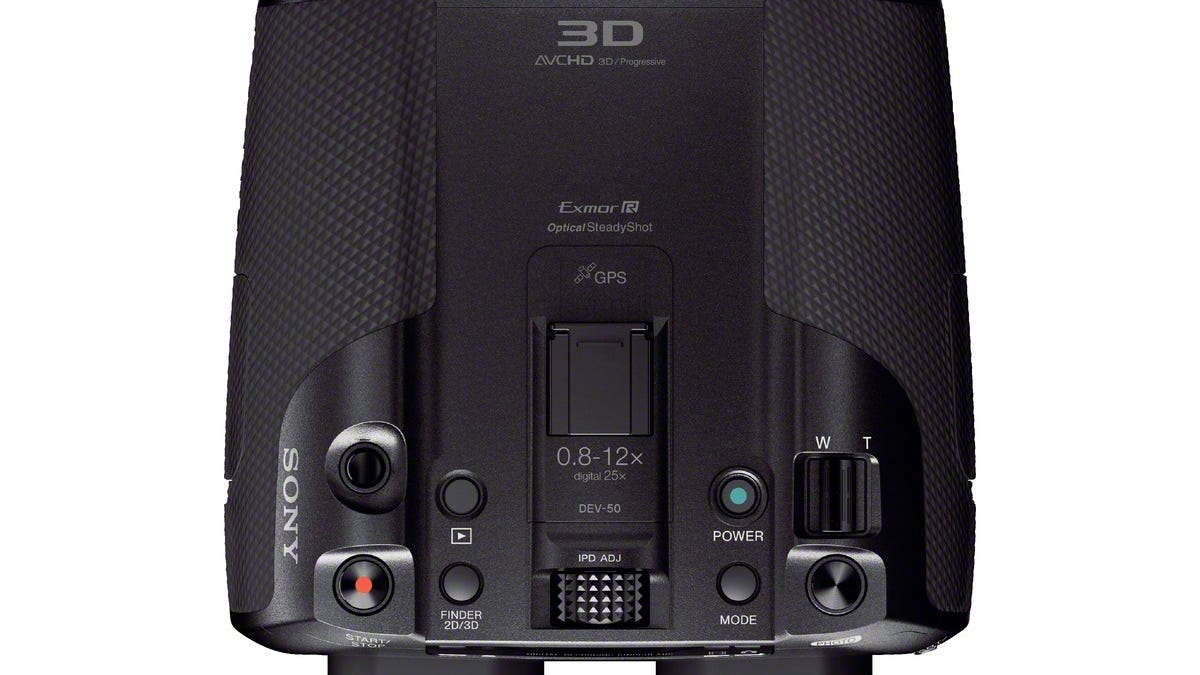Sony's new $2,000 digital binoculars get better zoom, EVF
The second-generation DEV-50V design improves zoom range, the electronic viewfinder, ruggedness, and size -- but not price.

Sony, trying to bring digital technology to a market that's remained stubbornly analog, has upgraded its digital binocular with the announcement today of the $2,000 DEV-50V.
The binoculars, due to ship in June, are vastly more expensive than even high-end binoculars from rivals such as Canon and Nikon. But Sony's digital binoculars -- which capture a scene with image sensors then display it with small electronic viewfinder (EVF) -- can do something ordinary binoculars can't.
Namely, they'll help you remember what you saw by taking a video or photo. And, if you like, it'll do it in 3D by virtue of the stereoscopic nature of binoculars.
The DEV-50 replaces the two digital binocular products that launched Sony's digital binocular effort a year and a half ago: the $2,000 DEV-5 and $1,400 DEV-3.
And of course there are improvements:
• The DEV-50V is 30 percent smaller than its predecessor.
• Zoom lens performance expanded from a range of 0.9X to 10X before to a range of 0.8X to 12X. Digital zoom, which is to say computer-based magnification of the image from the center of the image sensor, reaches to 25X rather than just 20X.
• One of the biggest differences is in the EVF, a crucial part of how well the binoculars will work for people trying to see detailed bird feathers. The old model had an LCD display with a resolution of 852x480, but the DEV-50V has an OLED display with 1024x768 resolution.
• The new model has better resistance to dust and water. It can be used in the rain, for example, Sony said.
• The twin Exmor R image sensors, measuring a relatively small 4.6mm diagonally, each have 5.4-megapixel resolution. That's up from 4.2 megapixels last time around.
Built-in GPS means that photos and videos are geotagged, which could come in handy on sites like Flickr or Google+ that support location data and could be very useful for sites like eBird or Project Noah that feed data into scientific research. GPS was only on the DEV-5 model from the last generation.
The binoculars weigh 1.6 pounds, or 765g.
I'm not sure exactly how Sony does the math, but a still photo with the binoculars comes out at a maximum resolution of 20 megapixels (6016x3384 pixels for the 16:9 aspect ratio, and narrower if you select 4:3).
The zoom range in 35mm-equivalent terms is, for video, 50-790mm with digital zoom off and 50-1646 with digital zoom on. For still photos, the zoom range is 30-1648mm for 16:9 aspect ratio and 36-2001mm for 4:3. With 3D video, the zoom range is reduced.
The binoculars have optical stabilization, which is all but essential for such high magnification. Sony also boasts that the binoculars work better than conventional ones in low-light conditions since the digital sensors can amplify available light. Of course, that means a noisy image.
The models store video with the AVHCD 2.0 format and still photos with JPEG. HDMI, microphone, and headphone jacks are on the sides. Imagery is recorded to SDHC or SDXC memory cards or, for those still using Sony's flash, Memory Stick Pro Duo.
The binoculars also can be plugged in during usage, and an AC adapter and power cord are supplied.

